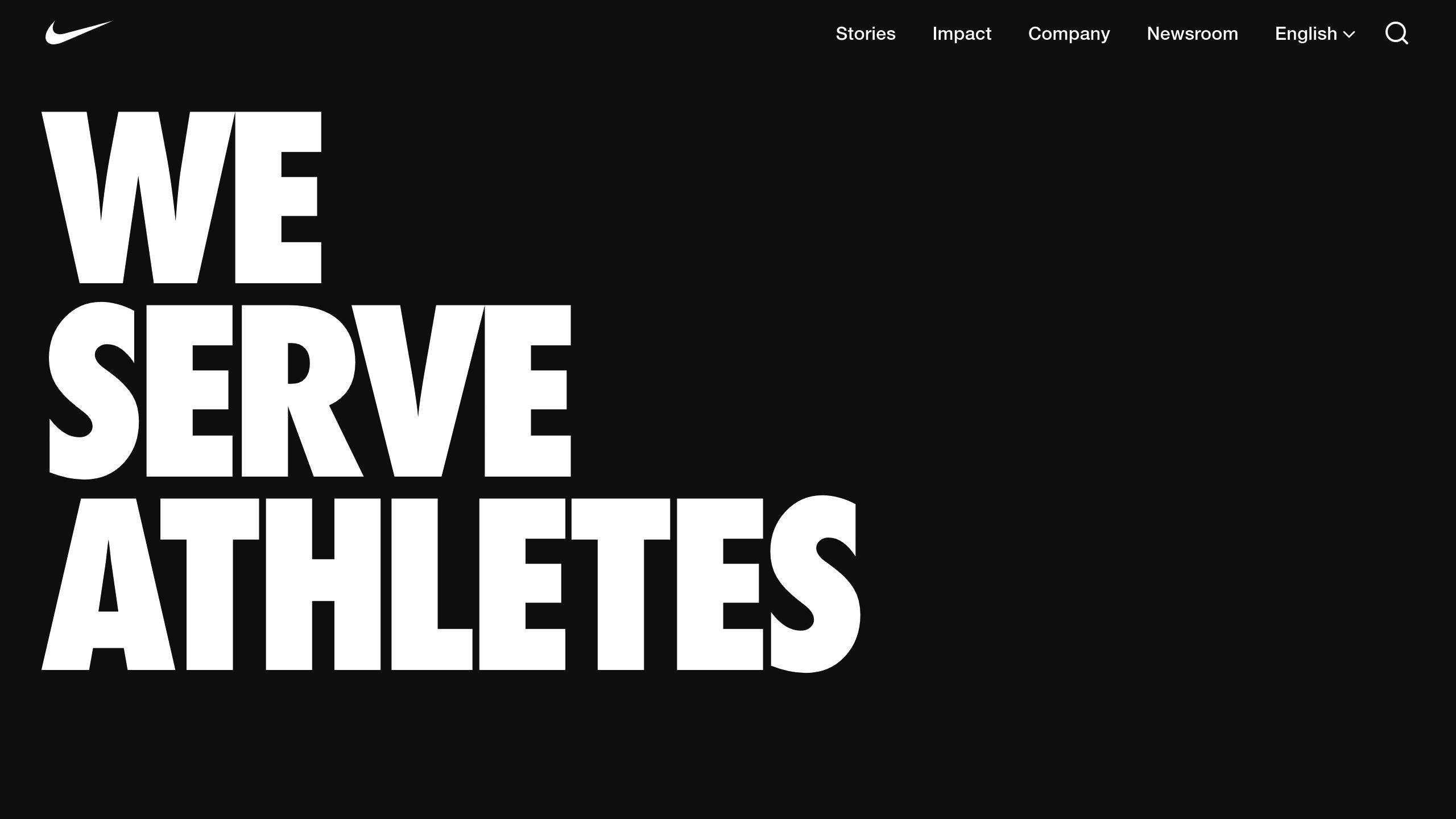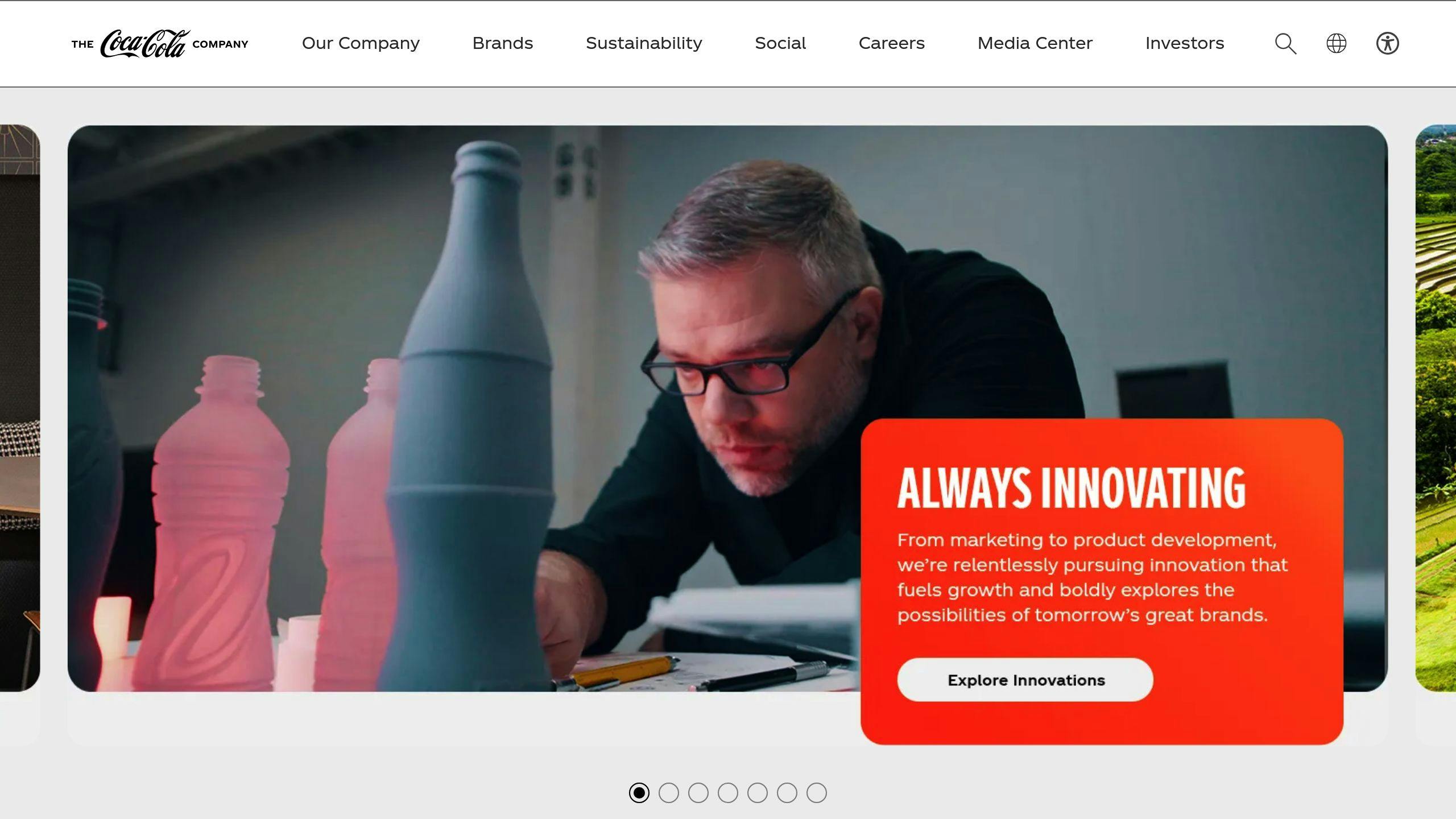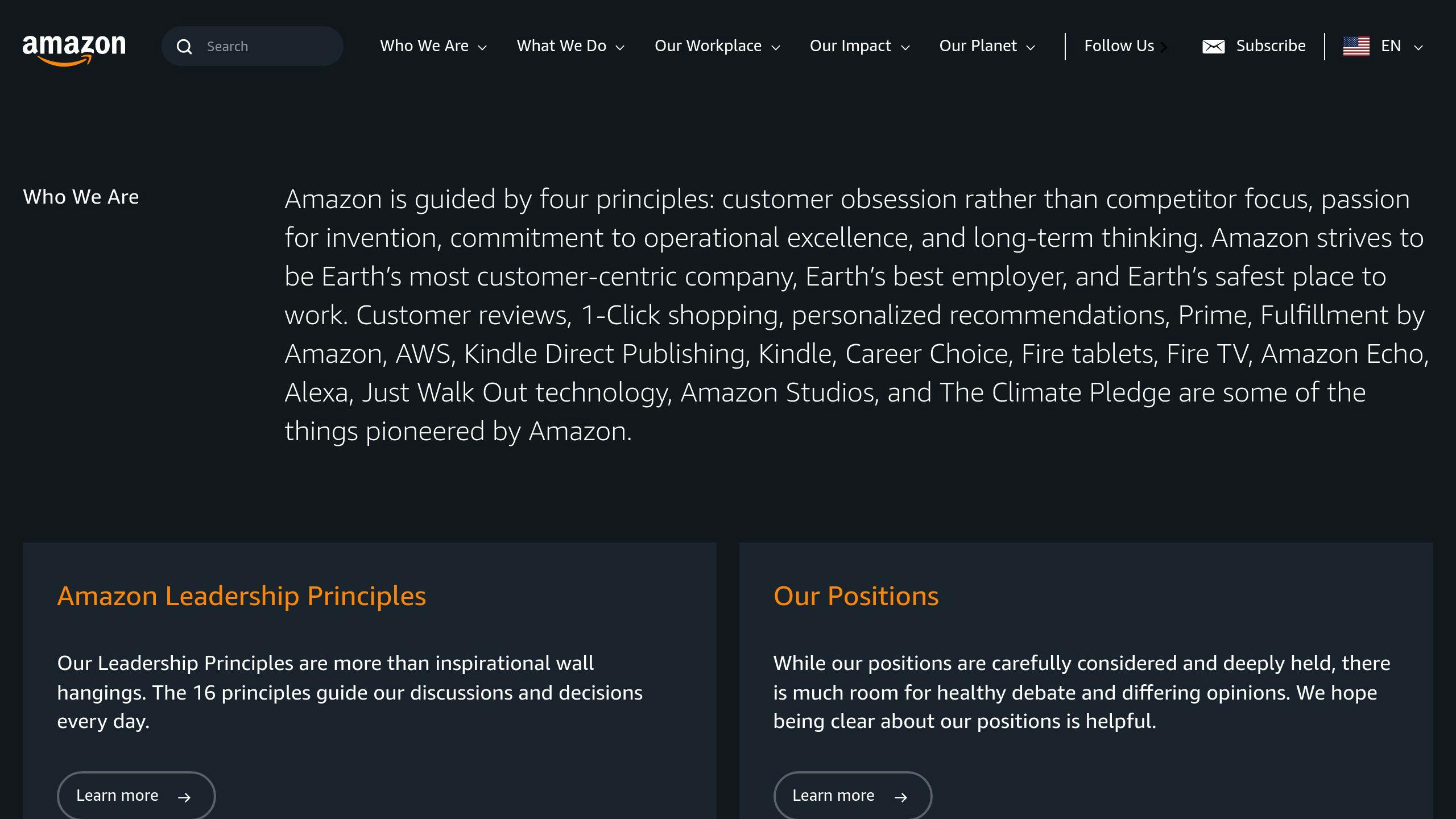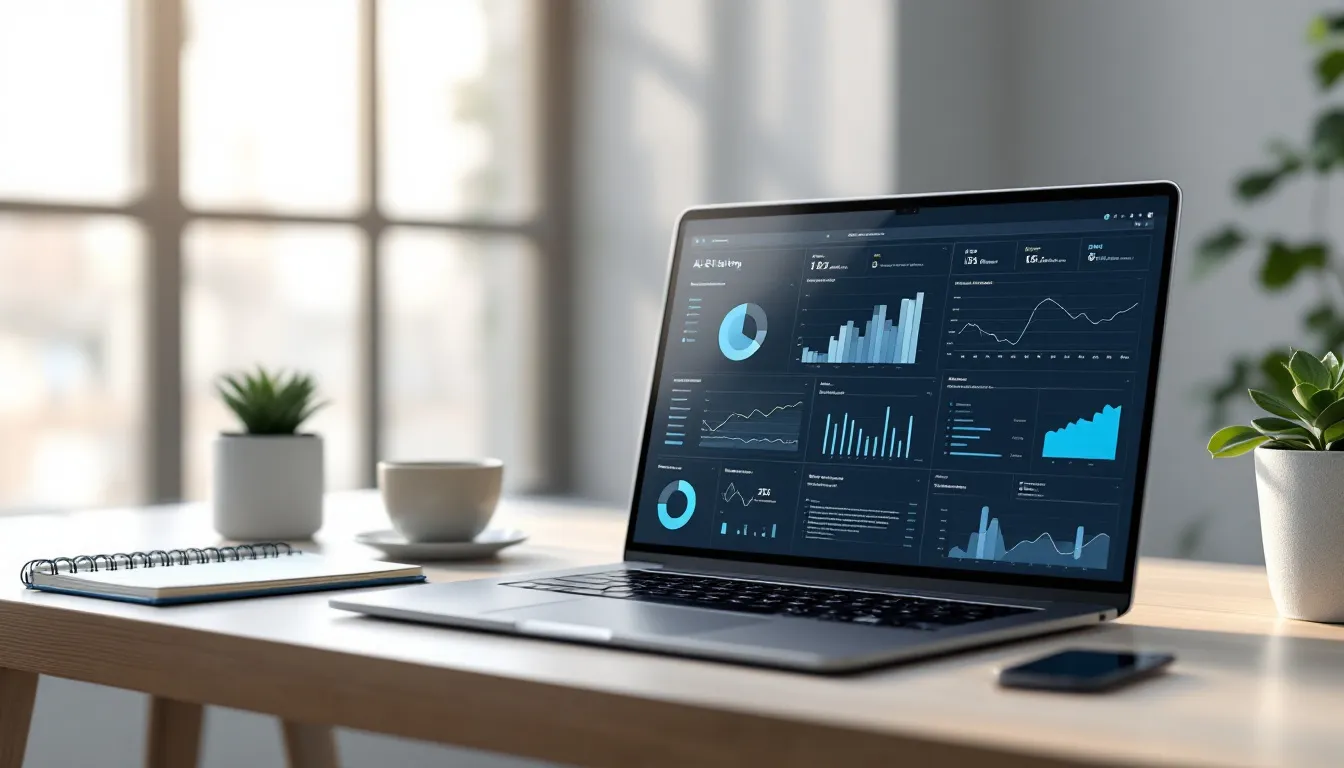Here's how top brands use sentiment analysis to improve:
- Nike: Manages public opinion during social campaigns
- Starbucks: Improves customer experience globally
- Tesla: Gathers new product launch feedback
- Coca-Cola: Compares brand performance against competitors
- Amazon: Analyzes massive volumes of customer reviews
Quick Comparison:
| Brand | Key Strategy | Main Benefit |
|---|---|---|
| Nike | Real-time social monitoring | Quick response to campaign reactions |
| Starbucks | Mobile app data analysis | Personalized ordering experience |
| Tesla | Social media sentiment tracking | Rapid product improvements |
| Coca-Cola | Competitive benchmarking | Data-driven marketing decisions |
| Amazon | AI-powered review analysis | Enhanced customer trust |
These examples show how big brands use sentiment analysis to:
- Spot trends and issues fast
- Improve products and services
- Make smarter marketing choices
- Build stronger customer relationships
Want to use sentiment analysis for your brand? Start by setting clear goals, picking the right tools, and mixing AI smarts with human insight.
Related video from YouTube
Nike: Managing Public Opinion During Social Campaigns

Nike's got a knack for getting people talking with their bold social campaigns. But how do they keep track of what everyone's saying? Let's take a peek behind the curtain.
Tracking Mixed Public Reactions
Nike's public sentiment monitoring is like playing Whac-A-Mole on steroids. They use a bunch of tools to catch every single comment about their campaigns.
They do it like this:
- They listen on social media. With 252 million Instagram followers and 9.6 million on Twitter, there's a lot to hear.
- They track engagement. It's not just about likes - they look at shares, comments, and even emojis.
- They analyze sentiment. This is where it gets interesting. Nike uses smart tools to figure out if people love or hate what they're doing.
Setting Up Sentiment Tools
Nike doesn't mess around when it comes to tracking public opinion. They've got a whole arsenal of tools:
| Tool Type | What It Does | How They Use It |
|---|---|---|
| Social Media Monitors | Keep tabs on mentions and engagement | Spot trending hashtags about their campaigns |
| Sentiment Analysis Software | Sort reactions into good, bad, or meh | Check how people feel about a new ad |
| Real-time Analytics Dashboards | Show data trends visually | Watch how opinions change during big events |
Actions and Results
Remember when Nike dropped that 30th anniversary "Just Do It" campaign with Colin Kaepernick in 2018? Talk about stepping into a hornet's nest. Here's how they handled it:
1. Quick response team
They had people ready to jump in and deal with both the love and the hate.
2. Content adaptation
They tweaked their message based on what people were saying in real-time.
3. Influencer partnerships
They got athletes and celebs who backed their message to help spread the good vibes.
"We believe Colin is one of the most inspirational athletes of this generation, who has leveraged the power of sport to help move the world forward." - Gino Fisanotti, North America's vice president of brand for Nike.
And boy, did it pay off.
Performance Numbers
The Kaepernick campaign blew up in a big way:
- $43 million in earned media in just 24 hours
- Brand mentions across social platforms shot up by 135%
- The campaign got mentioned over 2 million times
But here's the real kicker:
| Age Group | Approval Rate |
|---|---|
| 18-34 years | 67% |
| Overall voters | 49% |
These numbers show that Nike hit the jackpot with younger folks, who tend to dig brands that take a stand on social issues.
Starbucks: Improving Customer Experience

Starbucks isn't just serving coffee. They're serving up a masterclass in using customer feedback to boost their global service. Let's see how they've brewed this success.
Tracking Global Customer Feedback
With 25,000 stores worldwide and 90 million weekly transactions, Starbucks has a mountain of customer data. Here's how they tap into it:
- Their mobile app, with 17 million users, is a goldmine for data
- The rewards program, boasting 13 million active users, tracks purchasing habits
- They keep an eye on social media, where they have millions of followers
Live Feedback Analysis
Starbucks doesn't just collect data - they act on it. Fast. Their approach?
- Real-time analytics dashboards spot trends as they happen
- AI helps them crack complex customer behaviors
- They even use weather forecasts to predict drink preferences!
"Delivering the options our customers want is always the highlight of my day. We have a high bar for anything we pair with our high-quality espresso and this coconut milk is smooth and perfectly complements the coffee." - Christine Barone, former Vice President of Brewed Espresso at Starbucks.
Customer Service Updates
Starbucks listens and acts. Here's how they've used feedback to spice up their service:
1. Personalized Ordering
Their app now recognizes you at new locations. Your favorite drink? Ready before you even ask.
2. Menu Innovations
| Year | New Option | Customer Demand |
|---|---|---|
| 2004 | Soy Milk | Rising lactose intolerance |
| 2015 | Coconut Milk | My Starbucks Idea platform |
| 2016 | Almond Milk | Health-conscious trend |
| 2018 | Oat Milk (Europe) | Plant-based milk boom |
3. Virtual Barista
Order by voice or message in their app. Getting your caffeine fix just got easier.
Results of Changes
Did all this data-crunching and latte-tweaking pay off? You bet:
- Mobile orders shot up, cutting wait times and boosting satisfaction
- Plant-based milk sales grew 61% from 2012 to 2017 in the U.S.
- They hit 100% positive sentiment on Facebook
Starbucks has turned listening and adapting into an art form. By mixing tech with a personal touch, they've created a loyalty recipe that keeps customers coming back for more.
sbb-itb-645e3f7
Tesla: New Product Launch Feedback
Tesla's not just good at making electric cars. They're also pros at tracking what people think about their new stuff. Let's see how they do it.
Launch Feedback Management
Tesla's got a smart way to keep tabs on what people are saying before and after they launch something new:
- They tease people with mysterious tweets before the launch
- During the big reveal, they watch social media like hawks
- After the launch, they use fancy tools to figure out if people like the product or not
Remember the Cybertruck launch? The "bulletproof" glass broke during the demo. Oops. But Tesla turned that mess into a win. They got over 250,000 preorders in just a few days.
Social Media Monitoring
Tesla's always watching social media. Here's how:
| Platform | What They Do | Why They Do It |
|---|---|---|
| Watch for keywords in real-time | See instant reactions | |
| YouTube | Use AI to analyze comments | Get deep insights |
| Track how many people engage | See if visual content works |
Their YouTube comment analysis is pretty cool. They used a smart AI called RoBERTa to look at nearly 20,000 comments over 10 years. It could tell if comments were positive or negative with 92.15% accuracy.
Marketing Changes
Tesla's quick to change their marketing based on what people say:
1. Quick Thinking
When the Cybertruck glass broke, Tesla didn't hide. They made jokes about it and kept people talking.
2. Using Customer Content
Tesla loves showing off photos and videos from real Tesla owners. It makes other people trust them more.
3. Improving How They Sell
Tesla keeps changing how they sell cars based on what customers say. Now their stores have coffee bars and internet stations to make buying a car more fun.
Key Findings
Here's what Tesla's learned:
- People LOVE Tesla. Their Net Promoter Score (that's a fancy way to measure how much customers like you) is 96. That's way higher than any other car company.
- Being open about problems makes people trust you more. 91% of Tesla owners say they'd buy another Tesla.
- It's okay if things aren't perfect. The Cybertruck launch showed that if your idea is cool enough, people will get excited even if the demo goes wrong.
- Keep making things better. Tesla's always updating their cars' software and adding new features based on what customers want.
Tesla's not just making cars. They're changing how companies launch products and talk to customers. By using smart tech and really listening to people, they're showing everyone else how it's done.
Coca-Cola: Comparing Brand Performance

Coca-Cola isn't just a soft drink giant; they're a marketing powerhouse. Let's dive into how they measure up against the competition.
Market Standing Analysis
Coca-Cola's global reach is impressive:
- 1.9 billion drinks served daily across 200+ countries
- 108 million Facebook fans and 2.9 million Instagram followers
- 4 million YouTube subscribers with 5.6 billion views
But it's not just about big numbers. They use smart tools to understand public perception.
Brand Comparison Methods
Coca-Cola uses a toolkit to measure their brand against rivals like Pepsi:
| Tool | Purpose | Impact |
|---|---|---|
| Social Listening | Real-time mention and sentiment tracking | Quick trend and issue identification |
| Brand Intelligence | Social media performance comparison | Competitive benchmarking |
| Sentiment Analysis | Tweet categorization (positive, negative, neutral) | Brand perception measurement |
They even use AI for deeper analysis. In one study, they analyzed 5,000 tweets each for Coca-Cola and Pepsi. Both brands scored about 75% positive sentiment.
Business Changes Made
Coca-Cola uses this data to drive change:
1. Product Innovation
They've launched new products like Diet Coke and Coke Zero based on consumer preferences.
2. Data-Driven Marketing
The "Share a Coke" campaign wasn't random. It was based on consumer data and insights.
3. Strategic Influencer Partnerships
In 2020, Coca-Cola partnered with 154 celebrity endorsers, using data to find the best matches.
Success Measurements
The results speak for themselves:
- 147,865 Instagram interactions from just 12 posts in three months
- Improved brand sentiment from campaigns like #shareacoke
- Total social media reach of 115.31 million, dwarfing Pepsi's 44.09 million
"Coca-Cola aims to increase its customer base by two billion by 2020, targeting middle-class individuals in rural areas and investing US$30 billion in the global market to double its revenue."
This strategy shows they're turning social media engagement into real business growth.
Coca-Cola's approach to brand performance is a mix of data analysis and creative marketing. By constantly measuring, comparing, and adapting, they're staying ahead in the competitive soft drink market.
Amazon: Customer Review Analysis

Amazon deals with a ton of customer reviews. Let's see how they handle this feedback flood.
Processing Large Review Volumes
Amazon's review processing is intense:
- 1.5 billion reviews and ratings in 2022
- 45 reviews every second
- 125 million customers sharing thoughts
To manage this, Amazon uses:
| Technology | Purpose |
|---|---|
| AI and Machine Learning | Detect fake reviews |
| Natural Language Processing | Understand review content |
| Cloud Computing | Speed up processing |
Review Analysis System
Amazon digs deep into customer feedback:
1. Sentiment Analysis
Amazon Comprehend figures out if reviews are positive, negative, or neutral.
2. Entity Recognition
The system identifies key elements like product names or features.
3. Topic Modeling
It groups reviews into themes like "ease of use" or "durability".
4. AI-Generated Highlights
A new feature summarizes key points from reviews.
"We want to make it even easier for customers to understand the common themes across reviews, and with the recent advancements in generative AI, we believe we have the technical means to address this long-standing customer need." - Vaughn Schermerhorn, Director of Community Shopping at Amazon
Customer Response Plan
Amazon acts on review insights:
- They work with sellers to fix common issues quickly
- They share feedback with manufacturers for product improvements
- Your review history helps Amazon suggest products you might like
Trust Building Results
This review analysis builds customer trust:
- Most reviews pass authenticity checks and get posted immediately
- In 2022, they blocked over 200 million suspected fake reviews
- They're always improving fake review detection
Amazon's review system is a trust-building powerhouse. By analyzing customer feedback, they're creating a shopping experience people can rely on.
Main Lessons Learned
Let's dive into what we've learned from these brand sentiment analysis examples. We'll look at what worked, the problems brands faced, and how you can use sentiment analysis effectively.
What Worked Well
These strategies hit the mark:
| Strategy | Example | Result |
|---|---|---|
| Real-time monitoring | Nike's Kaepernick campaign | $43 million in earned media in 24 hours |
| Personalization | Starbucks' mobile app | More mobile orders, happier customers |
| Quick feedback response | Tesla's Cybertruck launch | 250,000 preorders despite demo hiccup |
| Data-driven marketing | Coca-Cola's "Share a Coke" campaign | 147,865 Instagram interactions from 12 posts |
| AI-powered review analysis | Amazon's customer feedback system | Blocked 200 million+ suspected fake reviews in 2022 |
Common Problems
But it wasn't all smooth sailing. Brands hit some snags:
- Sarcasm and cultural references threw off sentiment classifiers.
- Too much data overwhelmed analysis efforts.
- Global brands struggled with multi-language sentiment analysis.
- AI tools sometimes showed bias, skewing results.
Recommended Steps
Want to nail your sentiment analysis? Here's how:
1. Know your goals
What do you want to learn? Brand perception? Product feedback? Customer service quality? Get specific.
2. Pick the right tools
Choose tools that fit your needs. For example, Revuze's AI can analyze up to 80 topics with 90% accuracy.
3. Use good data sources
"Look at customer reviews, social media, support tickets, and surveys. You need the full picture of what customers are saying."
4. Watch in real-time
Set up systems to track sentiment as it happens. This lets you jump on issues or trends fast.
5. Mix AI with human smarts
AI can crunch tons of data, but you need humans to catch the nuances and context.
Useful Tools
These tools can supercharge your sentiment analysis:
| Tool | Key Feature | Best For |
|---|---|---|
| Amazon Comprehend | AI sentiment detection | Analyzing tons of reviews |
| Sprout Social | Social media monitoring | Tracking brand sentiment in real-time |
| Revuze | Topic-specific analysis | Deep-diving into product feedback |
| Radarr | Emotional insights | Improving customer experience |


